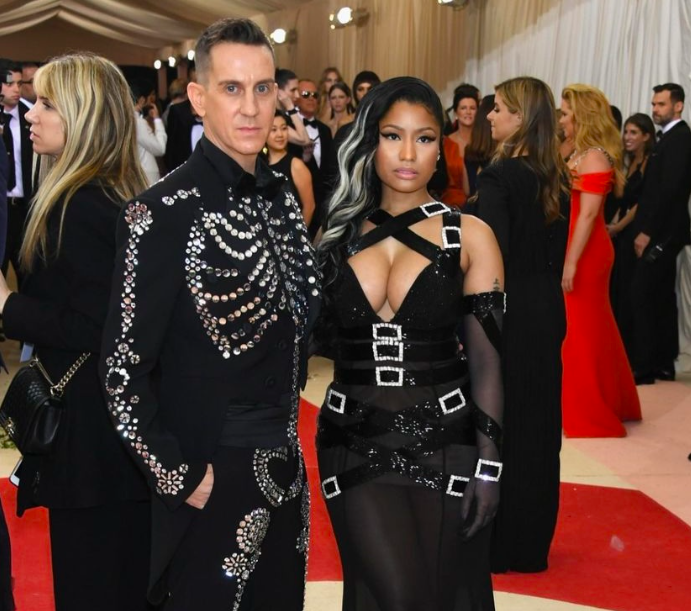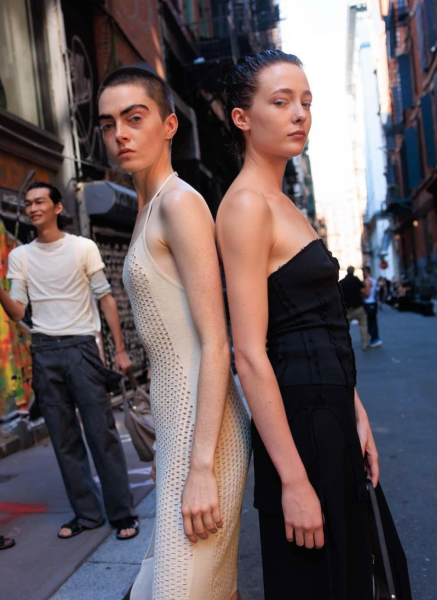The End of an Era: Jeremy Scott Leaves Moschino
A McDonald’s Happy Meal dress and My Little Pony streetwear weren’t high fashion until Jeremy Scott, creative director of Moschino, put them on a runway at Fashion Week. Now, after a decade-long reign under the label, Scott has left his position at the Italian luxury fashion house.
When a prominent social figure such as Scott parts with a high-profile brand like Moschino, there’s often a concern for controversy within the industry. But rest assured, the split is drama-free and the relationship is still more than amicable. Moschino’s own press release read that they were honored to have worked with the creative force that is Jeremy Scott. Furthermore, in a viral Instagram post announcing his decision, Scott claimed to have a great love for the company and the friendships it has given him. Support for his future and encouraging comments thanking him for his contributions poured in from actors, models and fellow designers. The post featured himself during the fall 2018 season with one of his personal muses, Gigi Hadid. Hadid, in a personal statement, said she couldn’t wait to see where Scott takes the industry next. She’s not the only one curious about the designer’s plans — Scott has remained tight-lipped about his ambitions, claiming he’s closed this long chapter with “anticipation and excitement” for the updates he hopes to publicly share soon.
Moschino has yet to announce a replacement for Scott or detail their creative plans for when he leaves, but the designer is currently in Seoul, South Korea, following the unveiling of a collection he’s designed under his own name. In collaboration with Hyundai, Scott created a promotional set of 10 pieces, made from recycled car materials and called it “Couture or Car-ture?” Despite his fondness for the city and creative history with personal friend and muse, K-pop singer CL, Scott hasn’t decided where the next base of his operations will be. According to an interview with Vogue, he’s most excited that although he has a vision, there are no immediate plans for his future and, for the first time in years, he’ll be taking a tiny break. Emphasis on tiny. Not even a week after his announcement, the designer jet setted to Korea for a personal collaboration, and if history is any indicator, the designer won’t stay dormant for long. Ten years worth of all-caps Instagram captions are evident enough that being invisible isn’t in Scott’s nature, and once he’s fully separated from Moschino, we can expect a quick resurgence.
Scott’s exit from Moschino is a big change for the fashion industry as a whole. The label’s popularity and awareness of its existence in general has skyrocketed since he joined in 2013 and fans, so far, are lamenting his decision. Scott is known for his audacious pop culture references, outlandish outlets of inspiration and consistent use of bright colors and patterns. Part of what made him such a unique fashion architect at Moschino was his personality. His clothes are loud, bold and take up space, and the designer is similar in nature. At Moschino events and shows, he was known for getting to know his models, speaking to everyone in the room and keeping close friendships in an industry that’s thought to be one of the most competitive and isolating in America.
Widely considered as a father of camp fashion, one of Scott’s own greatest achievements on and off the runway is his continuation of Franco Moschino’s original intention for the brand. He continued the satirical approach to clothes-making and the founder’s consistent commentary on consumerism and capitalism. Whether it was virtual clothing, pop art ensembles or Katy Perry’s debut as a chandelier and a hamburger at the “Camp: Notes on Fashion” MET Gala, Scott promoted a philosophy of “More is More” and cheap can be chic. His long-standing title as “King of Kitsch” is a reference that many designers would see as an insult, as kitsch is synonymous with “low-brow taste” or “trashy art.” How did Scott respond? In the fall 2017, he debuted a collection under Moschino of just that: trash clothing. Tissue boxes were hats, discarded plastic was a handbag and black stretch bags that normally belong as the liner of your disposal bin were the bodice of a dress. A king indeed. His rebellious spirit and his blatant rejection of modernity are what associated garbage with fashion and kitsch with luxury. Scott’s sense of play and the space of creative freedom that he carved out in the industry allows future designers, who may also feel drawn to “on-the-nose” fashion, to have a place in haute couture.
The legacy he’s left from his time with Moschino has made the label a pillar of the luxury fashion world and it raises questions that only time will answer: Will Moschino stay a pioneer of camp fashion and an extravagance visionary? Or, will the new creative director take the brand in a completely new, fresh direction?














































































































































































































